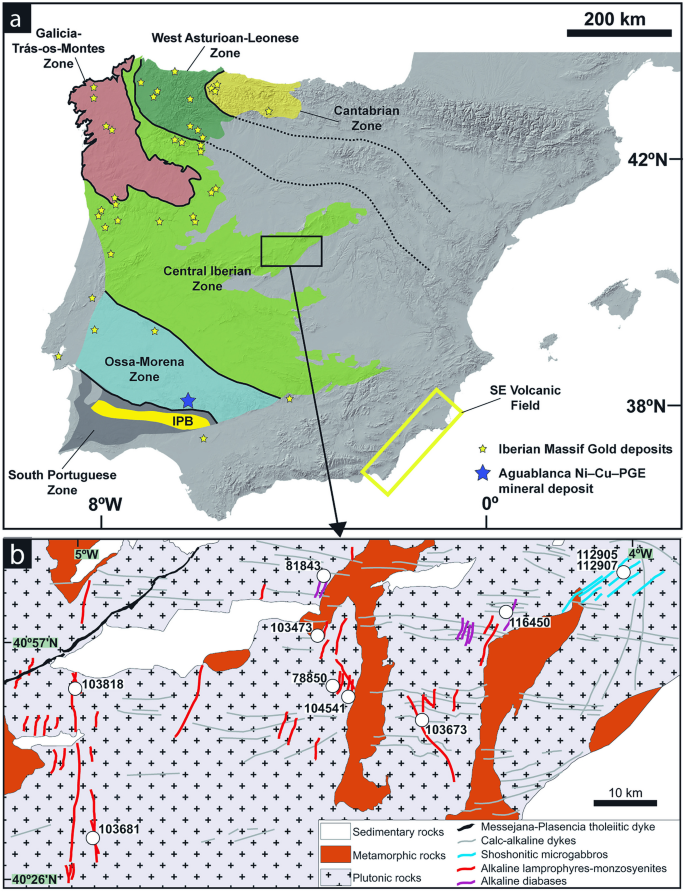The post-tectonic and post-orogenic mafic rocks from the Spanish Central System (SCS) (Iberian Massif) include dyke swarms of shoshonitic (microgabbros) and alkaline (lamprophyres and diabases) geochemical affinity, which register the nature of the metasomatic lithospheric mantle under central Spain. Such magmas sometimes show a direct (or indirect) relationship with the formation of orogenic and intrusion-related gold deposits, which are relatively abundant in the Iberian Massif. The noble and base metal composition of these intrusions shows Primitive Mantle-normalized patterns characterized by positive Au and Co anomalies and fractionated platinum group elements (PGE): from lower Ir-group PGE (IPGE; Ir–Ru) to higher Pd-group PGE (PPGE; Rh–Pt–Pd). The low contents of PGE, together with the base metal contents of pyrite (which is the dominant sulphide phase in the alkaline dykes), is in accordance with low degrees of mantle partial melting and the early segregation of sulphides during magma differentiation. The scarcity of PGE mineral deposits in the Iberian Massif could be explained in part by the apparent lack of PGE enrichment in the Iberian lithospheric mantle. On the contrary, the positive Au anomaly of the SCS mafic dykes represents relatively high Au contents, similar to (and higher than) those of mafic rocks derived from metasomatized subcontinental lithospheric mantle underlying Au-endowed cratons. Several geochemical features point to subduction-related metasomatism of either oceanic or continental nature as the main source of Au enrichment. The Au re-fertilization of the lithospheric mantle under central Spain makes it a potential source in the formation of gold mineralizations.



